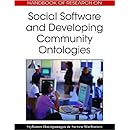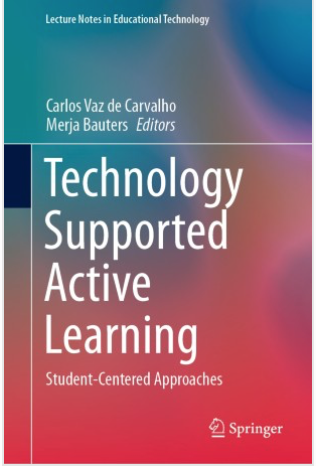Availability of different feeds, tags etc. used by social software technologies has triggered a big boom of distributed personal and group learning environments to be created and used for learning purposes. These integrate blogs, micro-blogs, different feeds from various friends’ blogs, social bookmarks, image- and video-repositories etc., that enable people to distribute their personal self to the different communities, while simultaneously managing their own tools as a learning- and knowledge-building environment.
A common way in e-learning 2.0 has been moving from initial personal learning landscapes (PLE) towards combining these with other people’s PLE’s in order to do some joint learning activities (Tammets, Väljataga & Pata, 2008). This often means changing and expanding each individual’s PLEs, and integrating new tools to their PLEs, while suppressing others in the sake of forming a shared activity space where all the tools can be used equally by the group members. Several obstacles rise in this PLE integration. The competitive nature of self-reflection done in personal PLEs against the reflective activities done in group landscapes integrated from PLEs is one that needs the most attention.
One of the most cherished sides of using PLEs has been the increase of self-reflection and self-direction that they promote. It has been emphasized that learning on our own in such environments creates many challenges, and forces people to develop self-reflection and self-direction competences in order to manage their objectives and be intrinsically motivated. Gillespie (2007) has brought out some of the theories of the origin of self-reflection: a) ruptured situations, in which actors have more than one response to the situation that needs decision-making, and thus self-reflection of our own arguments is induced; b) the presence of others who provide feedback to the sides of the self we are not so aware of, and thus make us to reflect upon these sides; and c) within the activity systems in groups and communities the reflection upon the rules and conditions of the ongoing interaction that leads to the personal self-reflection (Engeström, 1987).
The self, according to Hermans (1996), is organized as a dialogical interchange between relatively autonomous and mutually influencing selves. By allowing the various positions to be internally voiced, one reaches decisions and self-directs ones’ actions. The activities of self-direction contain diagnosing and formulating needs, identifying resources, choosing and implementing suitable strategies and evaluating outcomes (Knowles, 1975). Brockett and Hiemstra (1991), have pointed out that self-directed learning activities always take always place in a certain social context and cannot be separated from that social setting and other people. Thus, effective self-reflection and self-direction calls for challenging situations and the presence and reflective intercourse with other people.
Besides internal self-reflection and self-directed actions, PLEs, but especially blogs and micro-blogging tools, and personal wikis, enable people to record ones’ reflections externally, enabling them to keep track of their earlier reflections. They can also plan their activities in advance and monitor their self-directed actions in self-reflective manner. Using feed- and tag-technology with different social software tools enables people to mash in timeline their different types of reflections using them as evidence of their self-directed behavior. They can also mash these reflections with those of other people they work together with or whom they monitor, thus, creating the visible conflict situations for themselves to ponder about. Social software enables also to publicly distribute personal reflections, sharing them within groups and communities, since personal self-directed work is always the pillar on which the group work stands on.
iCamp project (http://www.icamp.eu/) has conducted several learning experiments in which learners were prompted to form a PLEs and conduct self-reflection in their personal spaces, while simultaneously being involved in the group activities in various types of group spaces (eg. shared weblog, shared wiki, combined distributed learning environment from various socials software tools). These experiments have indicated that active self-reflection and working in ones’ PLE might be inhibited after learner becomes involved in the group landscapes (Pata & Väljataga, 2007).
This suggests that the collaborative reflective activities, and working for the common goal might be hindering the individual reflective activities. This seems to be especially true if large parts of PLE remain separate from the shared group space and people need to take additional effort for contributing to both personal and group spaces. While not doing so, they miss the opportunity to benefit from the effects of self-reflection upon the dialogue and activities with their work mates. They may also not sufficiently pay attention to their own self-regulation within the group. The solution from the technical side can be seen in using the feed, mashup, trackback and other technologies for enabling the creation of such group spaces where large parts of individual PLE’s start serving as the mashed regulation spaces of the group. The pedagogical challenge is entwining the self-reflection activities into group communication upon the shared objectives.









